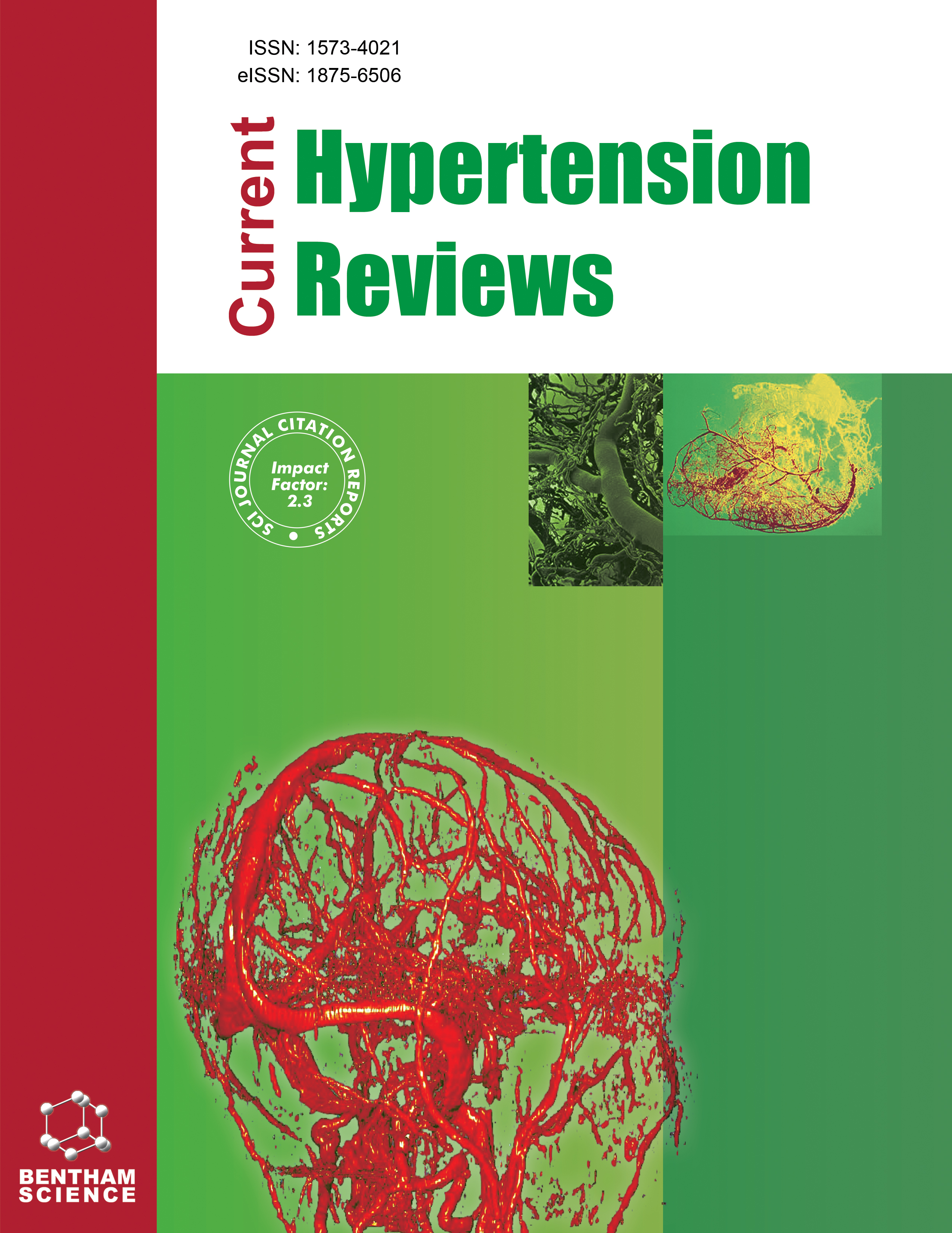- Home
- A-Z Publications
- Current Hypertension Reviews
- Previous Issues
- Volume 6, Issue 3, 2010
Current Hypertension Reviews - Volume 6, Issue 3, 2010
Volume 6, Issue 3, 2010
-
-
Renal Solute Transporters and Their Relevance to Serum Urate Disorder
More LessAuthors: Naohiko Anzai, Promsuk Jutabha and Hitoshi EndouSince uric acid (urate), the final product of purine metabolism, exhibits antioxidative activity, its protective role against oxidative stress becomes attractive. Low serum urate levels have been associated with multiple sclerosis, Parkinson's disease, and Alzheimer's disease. Despite its beneficial role, hyperuricemia is associated with gout, hypertension, cardiovascular diseases such as myocardial infarction and stroke, and renal di Read More
-
-
-
Platelet Ca2+ATPases: Identification and Regulation in Hypertension
More LessCell activation, proliferation, differentiation and apoptosis are tidily regulated by calcium signals. Altered Ca2+ handling has been described in essential hypertension in different cells including platelets. In this review we will particularly focus on members of calcium pump family; the plasma membrane Ca2+ATPases (PMCAs) and the Sarco/ Endoplasmic Reticulum Ca2+ATPases (SERCAs) that are expressed in platelets. We will Read More
-
-
-
Hypertension in Older Patients
More LessAuthors: Firas A Ghanem and Assad MovahedHypertension is most prevalent in the elderly population and a major source of morbidity and mortality. After the age of 50 years, systolic pressure continues to rise and diastolic pressure tends to fall leading to the predominance of isolated systolic hypertension (ISH). Systolic blood pressure is the main determinant of risk and should be the target of drug therapy. Lowering blood pressure in the elderly tends to decrease the inci Read More
-
-
-
Irbesartan: Second Generation of ARB as Metabosartan
More LessAuthors: Ryuichi Morishita, Yasuhiko Kanda and Masatoshi NakajimaIrbesartan is an angiotensin II subtype 1 (AT1) receptor blocker (ARB) that inhibits the actions of angiotensin II on the renin-angiotensin-aldosterone system. Once-daily administration of irbesartan provides 24-hour control of blood pressure in hypertensive patients. A renoprotective effect of irbesartan in hypertensive patients with type 2 diabetes at both the early and later stages of diabetic nephropathy has been demonstrat Read More
-
-
-
Antihypertensive Properties of Angiotensin-Converting Enzyme Inhibitors (ACEI) Independent of the Renin-Angiotensin System
More LessAngiotensin converting enzyme inhibitors (ACEi) lead to inhibition of angiotensin II formation and bradykinin inactivation. However, ACEi also have antihypertensive activity that is independent of the renin-angiotensin system. For example, the enhanced peripheral resistance due to smooth muscle cell hypertrophy and hyperplasia (related to lower apoptosis) increases vascular tonus in established hypertension. ACEi treatme Read More
-
-
-
Tissue Factor and Hypertension
More LessHypertension is characterized by an increased risk of thrombotic complications. This reviews describes the possible roles of tissue factor in the increased risk of thrombosis in hypertensive patients. Tissue factor is an integral membrane protein that represents the physiologic initiator of blood coagulation; its roles in thrombosis are also well documented. Activation of the renin angiotensin system may modulate tissue fact Read More
-
-
-
Resurgence of Herbal Antihypertensives in Management of Hypertension
More LessAuthors: Rajkumar Verma, Kashif Hanif, Dinakar Sasmal and Ram RaghubirHypertension is one of the major cardiovascular problems and causes a number of vascular disorders. Until the 1940s majority of the diseases were treated by traditional drugs obtained from plants/herbs only. Even the first potent herbal antihypertensive was obtained from root of Rauwolfia serpentina, a famous Ayurvedic plant but soon the modern antihypertensives took the center-stage because of their precise, Read More
-
-
-
Role of PGE2 in Blood Pressure Regulation
More LessBy Tianxin YangProstaglandin E2 (PGE2) participates in blood pressure (BP) regulation through diverse mechanisms involving different tissues and different receptor subtypes. In general, PGE2 functions as a natriuretic factor in the kidney, promoting sodium excretion via inhibition of sodium transport in the distal nephron. On the other hand, PGE2 is a vasoactive agent capable of modulating vascular tone. PGE2 is a product of prostaglan Read More
-
-
-
Renal Artery Stenosis: Current Perspectives on Imaging and Endovascular Management
More LessAuthors: Sandeep Vaidya, Manjiri Dighe and Xiaoming YangRenal artery stenosis in its early phase is now considered a treatable cause of hypertension. The most common causes of renal artery stenosis (RAS) are atherosclerosis and fibromuscular dysplasia. It is important to be familiar with the various modalities for diagnosis as well as treatment of RAS, especially due to the increasing availability of minimally invasive therapies. These diagnostic modalities include ultrasound, comput Read More
-
Volumes & issues
-
Volume 21 (2025)
-
Volume 20 (2024)
-
Volume 19 (2023)
-
Volume 18 (2022)
-
Volume 17 (2021)
-
Volume 16 (2020)
-
Volume 15 (2019)
-
Volume 14 (2018)
-
Volume 13 (2017)
-
Volume 12 (2016)
-
Volume 11 (2015)
-
Volume 10 (2014)
-
Volume 9 (2013)
-
Volume 8 (2012)
-
Volume 7 (2011)
-
Volume 6 (2010)
-
Volume 5 (2009)
-
Volume 4 (2008)
-
Volume 3 (2007)
-
Volume 2 (2006)
-
Volume 1 (2005)
Most Read This Month
Article
content/journals/chyr
Journal
10
5
false
en


